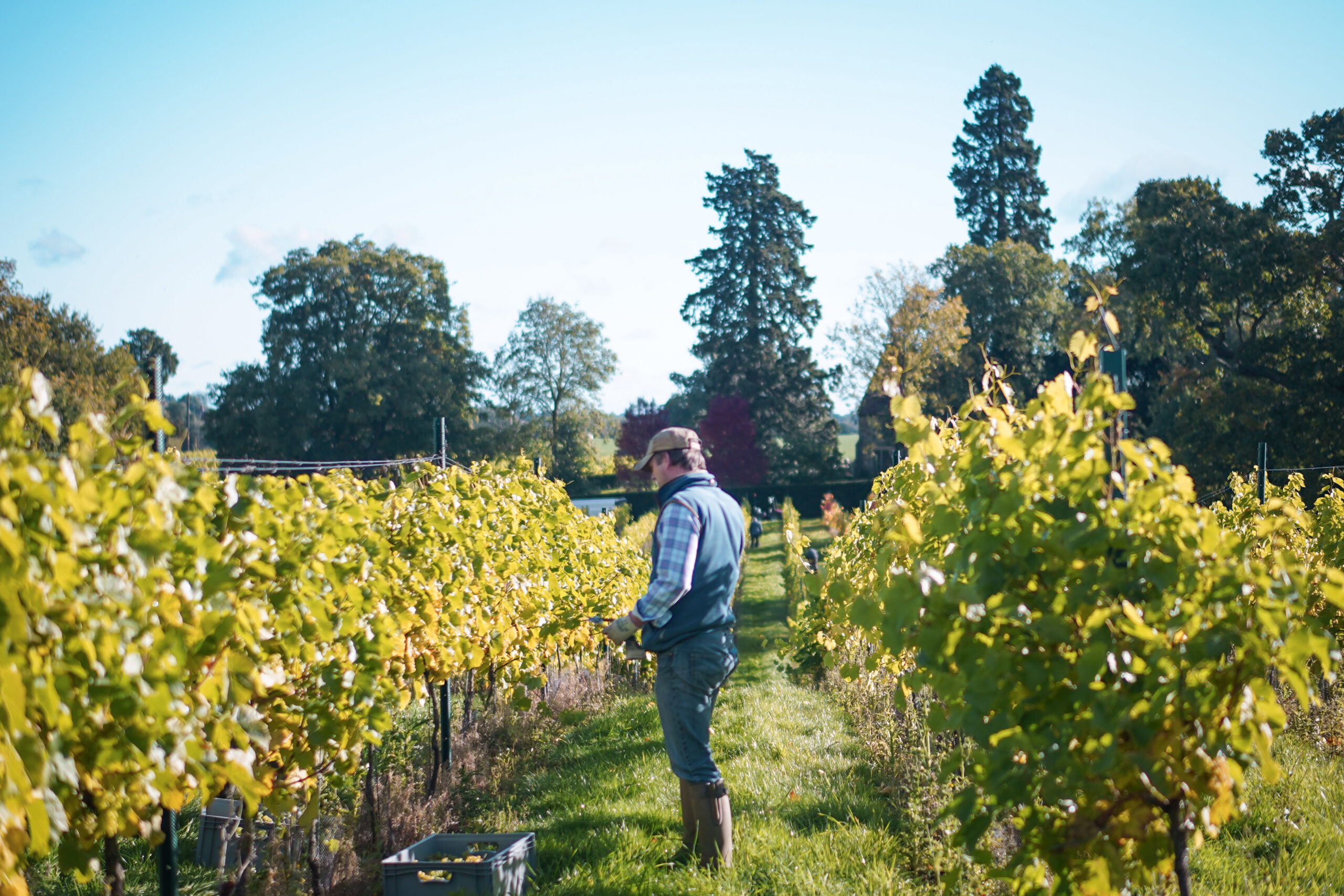As the vineyard season progresses, one of the essential tasks for vineyard owners and workers is bud rubbing. While it may seem like a simple task, bud rubbing is a critical part of vineyard management, especially for those growing grapes in Shropshire’s unique climate. Whether you’re new to viticulture or looking to perfect your vineyard’s maintenance routine, understanding the role of bud rubbing can help ensure your vines remain healthy, productive, and free of disease.
In this blog, we’ll explain what bud rubbing is, why it’s important, and how it plays a crucial role in maintaining your vineyard’s health and productivity.
What is Bud Rubbing?
Bud rubbing refers to the process of removing unwanted buds from a vine’s trunk or primary stems early in the growing season. After the vines have gone dormant in winter, they start to show signs of growth with the appearance of small buds. While some of these buds are intended to produce the fruit-bearing shoots, others may grow in undesirable places, such as along the trunk or the main stem, where they won’t contribute to the vine’s overall productivity.
Bud rubbing is the process of carefully removing these unwanted buds by hand or with a small tool, ensuring that the vine’s energy is directed toward the healthy, productive growth of the desired fruiting shoots. This is typically done in early spring before the vine starts putting significant energy into growth.
Why is Bud Rubbing Important for a Vineyard?
Bud rubbing may seem like a small task, but its benefits for the vineyard are significant. Here are the main reasons why this practice is so important:
1. Directs Energy to the Right Shoots
Vines are incredibly resourceful, but they can only produce so much energy. By removing unwanted buds, bud rubbing ensures that the vine’s energy is focused on developing the healthiest and most productive shoots. This helps the plant grow strong, robust fruiting shoots, which are essential for a successful harvest. For a small vineyard in Shropshire, this can mean higher-quality grapes, which translates to better wine.
2. Prevents Disease and Pests
In a vineyard, unwanted buds that are left to grow can become breeding grounds for disease and pests. By removing these buds early in the season, you reduce the potential for fungal infections, mold, and pests like aphids or mealybugs to take hold. This proactive approach to vineyard health can help reduce the need for chemical treatments, ensuring a more sustainable and organic approach to farming.
3. Improves Air Circulation and Sunlight Exposure
Bud rubbing helps maintain proper airflow and sunlight exposure around the vine. Excessive growth along the trunk or main stem can create dense clusters of leaves, limiting air circulation and blocking sunlight from reaching the lower parts of the vine. By removing these unnecessary buds, you allow the vine to grow in a more open, spaced-out way. This promotes better photosynthesis, strengthens the vine, and reduces the risk of fungal growth due to poor air circulation.
4. Maintains Vine Shape and Structure
One of the key components of good vine management is maintaining the shape and structure of the plant. Unruly growth along the trunk or stem can interfere with the vine’s overall form, making it harder to manage, prune, and train. By removing these extra buds, you ensure that the vine develops in a more orderly and manageable way, which will make tasks like pruning and trellising much easier later in the season.
5. Enhances the Quality of the Grapes
Healthy vines lead to better-quality grapes. When a vine is allowed to focus its energy on the best buds and shoots, it produces better-quality fruit. This is especially important for vineyards producing premium wines. By taking the time to carefully remove unnecessary buds, you are increasing the likelihood of having healthy, flavorful grapes that will make great wine, which is critical for maintaining a high-quality vineyard in Shropshire.
When Should Bud Rubbing Be Done?
Bud rubbing is typically performed during early spring, just as the buds begin to swell but before they have fully developed. The exact timing can vary depending on local climate conditions, but for Shropshire vineyards, it’s typically best to carry out this task in late March to early April. It’s important to catch the buds early, as waiting too long can result in damaged shoots or an uneven vine structure.
How to Perform Bud Rubbing
Bud rubbing is a delicate task that requires careful attention. Here’s a basic guide to performing the task:
-
Identify the Unwanted Buds: Look along the main trunk and primary stems of the vine for buds that are not in the optimal position or will not contribute to the vine’s productivity. These are the ones you want to remove.
-
Use Your Hands or a Small Tool: Gently pinch or rub off the buds. Some vineyard workers use a small pair of scissors or pruning shears, but it’s essential to be gentle to avoid damaging the vine.
-
Focus on the Main Stem: Concentrate your efforts on removing the buds along the trunk and primary stems. Keep the healthiest buds that are growing from the cordons (the horizontal arms of the vine).
-
Be Thorough: Go through the entire vine to ensure all unnecessary buds are removed. This is a time-consuming process but crucial for the vine’s health.
-
Check for Signs of Disease: As you rub off the buds, take the opportunity to check for any early signs of disease or pests, and take note of areas that may need closer attention.
Final Thoughts
Bud rubbing may be a small but essential part of vineyard management, especially for a small vineyard. By ensuring that your vines are focusing their energy on the best possible growth, you increase the chances of a healthy, productive crop and high-quality wine. Plus, the practice helps maintain the overall health of the vineyard, preventing diseases and pests from taking hold and improving airflow and sunlight exposure.
